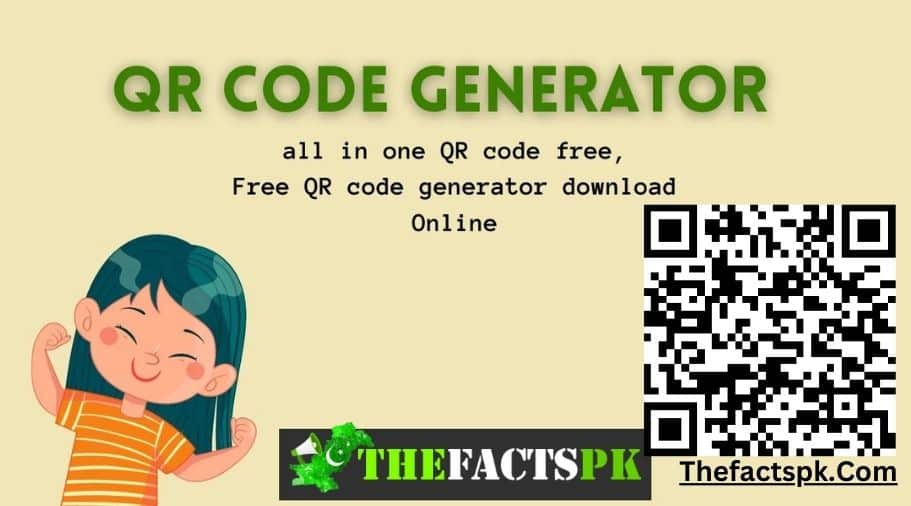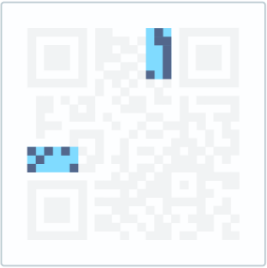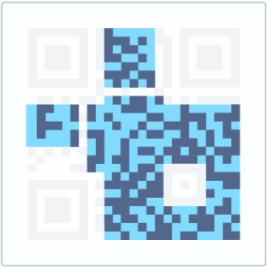Featured
Biography of Andrew Tate from jail to released now

Andrew Tate has been released from a Romanian jail and placed under house arrest
Introduction
A brief overview of the person’s life and accomplishments
Andrew Tate is a British-born former kickboxing champion, entrepreneur, and social media personality. He was born on December 1, 1986, in Washington, Tyne and Wear, England, and grew up in a family of accomplished martial artists. Tate has been involved in several controversies over the years, including criticism for his views on women and his participation in a reality TV show called “Big Brother”.
However, he remains a popular figure among his fans and continues to share his thoughts and ideas on his social media channels. Tate, aged 36, holds citizenship in both Britain and the US. With a Twitter following of 5.4 million, he encountered initial detainment towards the end of December in the city of Bucharest, Romania. This detainment involved his brother Tristan and two women from Romania.
| Net Worth | $350 Million |
| Name | Andrew Tate |
| Date of Birth | 1 December 1986 |
| Age | 36 Years Old |
| Gender | Male |

Explanation of why they are interesting
Success can be defined in many ways. For some, it’s achieving a certain level of financial stability, while for others, it’s reaching a high level of excellence in their chosen field. Andrew Tate has accomplished both, but his journey to success has not been without controversy.
The British-born former kickboxing champion turned entrepreneur has made headlines for his unorthodox views on a range of topics and his provocative social media presence. However, there is no denying that Tate has achieved a level of success that few people ever do. In this article, we will explore Tate’s life and career, from his early days as a kickboxer to his current status as a successful entrepreneur and social media influencer.
Early Life and Kickboxing Career
Early life
Andrew Tate was born in Washington, Tyne and Wear, England, on December 1, 1986. He grew up in a family of martial artists, with his father and brother both accomplished kickboxers. Tate began his own kickboxing training at the age of 6 and quickly showed a natural talent for the sport.
Religion
Recently, Andrew Tate disclosed his conversion to Islam. He was known to be an Orthodox Christian before. Tate had previously claimed that he was not a devout Muslim, but a popular video showing him praying at a mosque in Dubai on October 23, 2022, has now made it known that he has changed his religion.
Afterward, Tate publicly announced his conversion on his official Getter account. This is why I’m Muslim, according to the post from October 24th, 2022. ‘’Any Christian who believes in god and understands the true battle against evil must convert”.

Kickboxing Career
By the time he was 16, he had won multiple British championships and was well on his way to becoming a professional fighter. Tate’s kickboxing career took off in his early 20s when he began competing in international tournaments. He won his first world championship in 2008 and went on to win several more in the following years. Tate’s success in the ring was partly due to his powerful and aggressive fighting style, his rigorous training regimen, and his unwavering focus.
Entrepreneurship Ventures
Despite his success in kickboxing, Tate knew that he would not be able to compete forever. He began exploring other business opportunities, starting with a webcam modeling company called Alpha Investments. The company quickly became successful, and Tate used the profits to invest in other ventures, including a cryptocurrency trading platform called Cobratate and a real estate company called Tate Holdings.
Tate’s entrepreneurial ventures have not been without controversy. His webcam modeling company has been criticized for objectifying women, while his cryptocurrency trading platform has been accused of being a scam. However, Tate has remained undeterred, insisting that his businesses are legitimate and that he is simply a savvy entrepreneur.

Controversial Social Media Presence
In addition to his business ventures, Andrew Tate has gained notoriety for his controversial social media presence. He has been criticized for his views on various topics, including women’s rights, mental health, and race. Tate has been accused of promoting toxic masculinity and perpetuating harmful stereotypes, but he has also gained a following of supporters who appreciate his unapologetic approach.
Tate has used social media to promote his businesse and personal brand, but he has also used it to engage with his followers and offer advice on topics like fitness and entrepreneurship. Despite the controversies surrounding his social media presence, there is no denying that Tate has built a sizable audience and has leveraged his platform to achieve a level of success that few people ever do.

Challenges and Obstacles
Andrew Tate’s Arrest
The arrest of Andrew Tate took place on March 26, 2023, in Miami, Florida. The reason for his arrest was not immediately clear, but bcc reports suggest that it was related to an altercation with a woman at a nightclub. According to witnesses, Tate and the woman got into an argument, which quickly escalated into a physical altercation.
Tate was reportedly taken into custody by the police, and the woman was taken to the hospital with non-life-threatening injuries. After his arrest, news of Tate’s detention quickly spread on social media, with his fans and followers expressing their shock and disappointment at the news. Some of them even started a hashtag #FreeAndrewTate, calling for his release from jail. However, others were quick to condemn him, saying that he had a history of violence and misogyny.

Bails out
On March 27, 2023, Tate was released from jail after posting bail. The bail amount was set at $50,000, and Tate’s legal team was quick to arrange for his release. His fans and followers were once again quick to express their support, with many of them praising his legal team for their efforts.
However, the controversy surrounding Tate’s arrest and bail-out did not end there. Soon after his release, a video surfaced on social media showing Tate making derogatory comments about women and minorities. The video, which was reportedly recorded several years ago,
In This showed Tate using racist and sexist language and making jokes about rape and violence. The video sparked outrage on social media, with many people calling for Tate to be held accountable for his actions.
Some even called for his deportation, saying that his behavior was unacceptable and not representative of the values of the United States. In response to the backlash, Tate issued a statement apologizing for his past behavior. He said that he was “deeply ashamed” of his actions and that he had “grown and learned a lot” since then. He also said that he was committed to using his platform to promote positive values and support marginalized communities.
The arrest and bail out of Andrew Tate have sparked a heated debate on social media about the role of influencers and public figures in society. Some people argue that Tate should be held accountable for his past behavior, while others believe he should be given a second chance. Whatever the outcome of this controversy, it is clear that Tate’s actions have had a profound impact on his reputation and his standing in the public eye. As an influencer with a large following.
Personal Details
| Name | Andrew Tate |
| Full Name | Emory Andrew Tate III |
| Net Worth | $350 Million |
| Date of Birth | 1 December 1986 |
| Age | 36 Years Old |
| Birth Place | Washington D.C., United States |
| Kickboxer, Commentator, and Businessman | Washington D.C. |
| Profession | Kickboxer, Commentator and Businessman |
| Nationality | British-American |
| Religion | Islamic |
| Ethnicity | British and American Descent |
| Hometown | Washington D.C. |
| Zodiac Sign | Sagittarius |
| School/High School | Local School in Washington D.C., United States |
| College/University | Luton Sixth Form College, Bedfordshire, England |
| Education Qualification | Graduate |
Family, Girlfriend & Relationships
Andrew Tate’s father’s name is Mr. Emory Tate who was an International Master of Chess by profession.

His mother’s name is Mrs. Eileen Tate who is a housewife.

He also has two siblings. He has a sister named Janine, and a brother named Tristan who is famous to have appeared in Shipwrecked: The Island.


Andrew Tate’s marital status is unmarried. It Is said that he has dated at least one girl in the past but there were no names released so far.
| Father Name | Mr. Emory Tate |
| Mother Name | Mrs. Eileen Tate |
| Brother Name | Tristan Tate |
| Sister Name | Janine Tate |
| Girlfriend | – |
| Marital Status | Unmarried |
Email regarding my release will be sent in 24 hours.
— Andrew Tate (@Cobratate) March 31, 2023
Sign up for free on https://t.co/t5YXtUban5
God is great.
Featured
Affiliate Marketing Beginners Guide 2024 (How To Get Started)

Discover the world of affiliate marketing, an easy entry into entrepreneurship, with this comprehensive, beginner-friendly guide.
Affiliate marketing is one of the best ways you can make a passive stream of income.
You don’t need to have a website or even be a social media influencer – you only need to be a creative marketer.
One of my favorite examples from a conference about 12 or so years ago was someone who used affiliate links for dating programs by setting up road signs in heavy rush-hour traffic areas.
As people drove home from work and sat in traffic, they saw the signs and visited the URLs, which were landing pages or redirects through the affiliate links.
But that’s not a very sustainable strategy – just a unique way to make money as an affiliate marketer.
As you can see, there is no shortage of ways to make money with affiliate marketing, and this guide will help you devise a strategy and start your journey.
It is based on my 20+/- years of experience being an affiliate managing programs – and for a short time, managing an affiliate network.
Even if you’re already an expert, there are likely ideas you haven’t tried yet.
The strategies in this guide apply to individual people like bloggers and social media stars, businesses and non-profit organizations, and media outlets or publications looking to make money with affiliate marketing.
There’s a ton of information below, including statistics on what affiliates actually earn from some of the largest affiliate networks, so get ready to dive in.
We’ll start with defining what affiliate marketing is, go into the truth about what you should expect earnings-wise, and then ways you can become an affiliate, including unique ideas I’ve had but haven’t implemented or tried yet. That one is in the how to get started section.
Tip four in the “tips for beginners” section is more of an advanced affiliate marketing strategy as it is commonly overlooked and a missed opportunity for you to make money.
And there are other hidden gems mixed throughout.
What Is Affiliate Marketing?
Affiliate marketing is a performance marketing channel where a person or entity earns a commission by promoting a product or service.
In some instances, a mixed payment model like a flat fee with a commission or a commission and a lead CPA, a cost per click, a download, or other events could become options.
Leads could be app downloads, upsells in games, a form fill-out, newsletter sign-ups, and more.
There are three parties that interact to make the affiliate marketing channel work.
Affiliates (Also Known As Publishers And What You Are)
This is the person, company, or entity that is promoting a store, product, or service in exchange for a commission.
Merchants (Also Known As Offers)
A brand or service provider who is paying others to promote their offerings on a revenue-sharing basis.
Merchants may also create private bundles, packages, or funnels; these one-off deals normally have custom commissions. They are referred to as offers.
Affiliate Networks
The tracking platform that holds money in escrow, provides compliance guidelines, pays the partners, and tracks the conversions is known as the affiliate network. There are three types:
- Traditional – You’ll find ecommerce brands with their products listed, as well as lead offers from insurance companies, subscriptions, service providers, and even non-profits looking to fundraise.
- CPA – The CPA network differs from a traditional affiliate network because it lists single offers or product bundles with a flat payout. The affiliates in CPA networks choose offers and negotiate commissions based on the offer vs. having a full suite of product tools where they can mix and match commission models.
- Sub – Sub-affiliate networks are when other traditional affiliate networks or CPA affiliate networks join an affiliate program and list the merchant on their platform. This can also include monetization tools where an affiliate installs a JavaScript on their website, and the JavaScript turns backlinks into affiliate links on the exit click.
How Much Money Can You Make With Affiliate Marketing?
The amount of money you can make from affiliate marketing is limited to your ability to bring high- and mid-level intent users to your tracking links and convert them.
However, it is important to know that most people do not make a living exclusively from affiliate marketing. It’s a combination of channels and monetization strategies.
But don’t get discouraged; it is easy to earn a few thousand a year and then grow your income from there.
Affiliate revenue can complement and sometimes beat cost per thousand impressions (CPM) and flat fee rates, not to mention tide you over when sponsorships and ambassadorships dry up.
And almost every affiliate platform offers multiple ways for you to get paid. As the affiliate, it is up to you to talk to the affiliate programs you join to get increased percentages, flat fees, and mixed models.
I talked to multiple affiliate platforms, including some of the largest and most trusted networks in the US (a special thank you to ShareASale, Impact.com, and AWIN) to share stats on what percentage of affiliates that make at least $1 per year earn by revenue group in a 12 month period.
The following is the average based on the combined data we got from the groups we talked to (which isn’t limited to the ones mentioned above.) I’ve been asked not to share specifics from the contributors, so I will not.
But we talked to associations, SaaS private labels, etc.
| Annual Earnings | % of Partners |
| < 1K | 79.75% |
| 1K-5K | 9.30% |
| 5K-10K | 2.95% |
| 10K-50K | 4.40% |
| 50K-100K | 1.15% |
| > 100K | 2.45% |
Affiliate payment models and actions can include a traditional affiliate payment which is a percentage of sales, and be combined with the following:
- Flat fees for a sale or package.
- Cost-per-click payments.
- Cost per verified lead payments.
- Fee per download.
- Flat fee payments on upsells in a shopping cart.
- CPM (cost per thousand impressions).
- Newsletter sign-ups.
- Form completion fees (different from verified leads where payment is made or verification happens).
- Sponsorship and exclusivity fees.
- And more!
How Does Affiliate Marketing Work?
Affiliate marketing works using the following steps:
- You discover you can build an audience or reach an audience that has a need.
- Once a need is identified, you create a strategy to get your tracking link or code in front of the group.
- From there, you match the audience you’re reaching to the store, product, or service provider who has an affiliate program.
- Locate the best network or platform for the affiliate program and join.
- Once approved, verify your promotional method is compliant with the manager.
- Begin putting your tracking links or codes in front of the audience (with compliant advertising disclosures) and check the affiliate network to ensure clicks, leads, and sales are tracking.
- Expand on what works and continue to grow your income.
Types Of Affiliate Marketing
There’s almost no limit to the types of affiliate marketing.
Some methods have short-term revenue boosts, like sharing a link on social media, and others can build sustainable revenue for the long haul, like building destination websites.
You can even do affiliate marketing in person via presentations at a conference or handing out contact cards at a nightclub or networking event.
I’ve done this personally by using custom URLs and QR codes (with advertising disclosures).
And don’t limit yourself. You can mix and match to create a stream of revenue that has seasonal highs, bursts of revenue during slow times, and builds an audience you can scale – and eventually sell the destination property if you’d like.
Here are some of the ways you can be an affiliate marketer:
- Websites and blogs – Whether your website is topically niche, a reviews site, or you create how-to guides (recipes, home improvement, etc.), affiliate links can be used as tools, solutions, and complementary banners in a sidebar.
- Social media influencers – Can share affiliate links as they feature products and solutions. Having a vanity code is a great way to track sales if no clickable link is available (as long as it doesn’t leak to coupon sites and cash-back browser extensions).
- Social media advertising – Brands can only gain so much coverage on their own. By having experienced social media marketers running ads, they can increase their reach. And if you have a fan base, boosting your own posts through the ad platform is another form of paid social media that can work. Ask your affiliate managers for a boost budget if they’re asking for shares and you have an engaged audience.
- Social and professional groups – Let’s say you belong to a photography club or a professional Slack channel, or maybe you are part of or own a Facebook group for like-minded people. If you have permission from the owner, share your affiliate links with them. Better yet, the group owner can do it to raise funds for get-togethers and a slush fund if a member is ever in need.
- PPC – If the affiliate program allows for it, try running PPC ads. If you do trademark or trademark + coupons/reviews/etc., you will likely get removed from the programs, so don’t do it unless you have permission. Adding value to the brand and using non-branded phrases is always the safest route. Make sure to read the TOS of the program and ask the manager if direct linking or landing pages are required – you don’t want all of your commissions reversed because you forgot to check first.
- Destination sites and apps – Destination sites and apps are places people go to be part of a community and find resources because they have full trust in the place; it is their go-to destination. By being the leading authority, you can set up comparison pricing, booking, and shopping engines, as well as creative ways to use data and deal feeds to monetize the audience while providing resources.
- Ebooks and courses – Have you written an ebook, or do you sell a course that mentions a product, software, or service? You can use affiliate links here too.
- Subscriptions – Do you sell sports bet predictions or horoscopes, do paid marketing or professional newsletters, or even manage a subscription box? You can incorporate affiliate links into these.
- For sports bets, why not promote the venues they can place bets from and sell fan merchandise to loyal fans?
- YouTube – This is one of the top ways affiliates earn. People come to YouTube to learn how to do something, from styling hair to fixing their boats. They also look for comparisons and reviews. Each of these is prime for making money with affiliate links in the description and vanity codes in the videos.
- Don’t forget social media platforms that use video, like Reels, TikToks, etc.
- Newsletters and email – Email is not dead, and if you have an active list, you know the audience breakdowns. Share relevant and timely communications with them, and even deals on products they would need at the moment. Your email and newsletter list are your money-makers as long as you don’t abuse them.
- SMS – Just like emails above, if you don’t abuse your list, you can get an audience that clicks and shops. They tend to be younger, so audience matching here from the products, venues, and time/season is vital.
- Perks portals – Have you ever landed on the “thank you” page of a website, and there are offers for other companies? These are likely affiliate links or a hybrid affiliate commission + fee (cost per click, CPM, or flat fee).
- Cashback – If you’re getting cash back from a vendor, browser extension, or website, you’re getting a part of the commission they’re earning. You can offer cash back too, but make sure to talk to a licensed attorney and a certified CPA to get the processes and protections in place before starting.
- Coupon and deal sites – Coupon websites and deal sites (deal sites share products on sales vs. a coupon for a brand) are normally powered by affiliate commissions. They pull in product and deal feeds and collect commissions as you click and checkout.
- Reviews – Reviewing products in writing, on videos, and on social media is a great way to earn affiliate commissions.
- Partnerships and co-branded campaigns – One of my favorite strategies is to partner with other companies to promote each other with direct links or affiliate links. It could be blog posts, email blasts, co-sponsoring a giveaway on a third-party site (with an influencer or blogger), etc. You can reach other audiences, track everything, and generate income. These stats can then be used to build larger partnerships, especially if you’re smaller. You can approach a big brand and say, “Here are our stats and what you can expect for a CAC and ROAS compared to your other efforts.”
- Gift guides and portals – Gift websites that create lists, registries, or gift ideas listicles can all make money through affiliate links. It’s literally product and shopping-based content, so conversions and user intent are high.
- Planning apps – Apps that help people plan events (weddings, baptisms, birthdays, etc.) or even decorate a room are perfect for making money with affiliate marketing. You provide ideas and guidance, and the users provide preferences. You’re already making recommendations, and they’re going to be shopping. Have them shop through your affiliate links for extra revenue in your pocket. It’s money on the table.
- Offline ads – Buy ad space in a bathroom, a movie theatre screen, billboards, bus stops, or even a shopping cart space inside a store and have a QR code to get the person to take action. You could even offer a comparison price if you know the website is cheaper than in person, and offer a discount. If there’s a downloadable app, you have a captive audience and a message about saving right there on the spot.
- Listicles – These are the “best” and aspirational lists you’ll see ranking for shopping queries. Some could be the best XYZ product or service, others could be vacations and places to visit.
How To Get Started With Affiliate Marketing?
Many successful affiliates already have a platform, but there’s no reason you cannot start from scratch.
By going in with a plan, you can start your affiliate marketing journey with a more controlled approach, measurable steps, and the potential for better results.
Step 1: Pick A Niche You Are Excited By
The first step in affiliate marketing is to figure out what you can write about, talk about, be interviewed about, and not get tired of for at least three or four years.
If it bores you, or you pick a niche purely for performance, you’re less likely to see genuine success.
I know this from experience. You have to have passion to keep it interesting. Create an experience people will want to keep coming back to, that they will trust, and that they will share with others who are interested in the topic.
You must also be knowledgeable on the subject, or you will lack authenticity. It’s similar to E-E-A-T.
Here’s a way to see if the niche is a good one for you to try:
Create a list of at least 50 topics under that niche with 2 or 3 unique talking points about each.
If you cannot find at least 50 that are unique from each other, you may not have the expertise yet. You also won’t have enough content to publish or do something new for a full year. This will limit you.
That doesn’t mean you have to stop; instead, think of a complementary niche and see if it is topically relevant to the one you have. That includes audience demographics, stores, or service providers that cater to both topics, and you feel equally enthusiastic towards it.
If there is, this complementary theme will help you get to 50.
Step 2: Find Affiliate Programs To Join
Before you build a website, YouTube channel, podcast, or buy media, make sure there are programs that have an audience match and will accept your promotional methods.
Some affiliate programs don’t want review, deal, or coupon sites, for example. So if that was your plan, you may not have options right now.
Others don’t want podcasts, newsletter features, YouTube content creators, or PPC marketers because they don’t see the value.
And the same goes for audience matching.
Suppose none of the programs cater to a female demographic, but you have women as an audience. In that case, chances are you won’t make as much as you would with other niches because the shopping and conversion experience doesn’t meet their needs.
And if your promotional methods aren’t accepted in the program, your commissions will get reversed because you broke the program’s terms of service. But you can still make money in other ways.
Pro tip: Always read the program terms of service before joining and get permission for your promotional methods from the company before starting. This is how you can help to protect yourself. Don’t ever join, and just hope for the best.
Step 3: Launch Your Plan
Now it’s time to launch your plan. It could include a website, landing pages for paid media, a podcast, a YouTube channel, social media accounts, or any other way you plan to get your links to the right audience.
Here’s the idea I mentioned in the opening.
If you’ve been to a nightclub, bar, or even a hotel lobby bar, you’ve likely seen bathroom advertisements. They could be in the stalls or on the walls by the sinks. This is prime real estate with a captive audience.
If it is a late-night establishment vs. a daytime restaurant or the go-to pub by a large hotel that hosts conferences, this is what I’d be looking for.
As people have been drinking and the night is coming to a close, they will use the restroom before getting in a cab or Uber. They will also have some immediate needs, thoughts, or wants. This is where you can run your affiliate links.
- Buy ad space in the restroom.
- Have a QR code that redirects through your affiliate links on the ad.
- Find affiliate programs that would resonate with the specific types of patrons in that restroom. Nightclubs have different needs than high-end hotel bars, for example.
Here are niches that I’d potentially try for nightclubs:
- Late-night food delivery apps as people need to soak up the booze.
- Dating apps that cater to specific age ranges or demographics based on the type of nightclub (music, age demographic, LGBTQ+, etc.).
- Hydration therapy (IV drips) where you can book or do a quick and easy lead form, especially if you can book for the next morning, and they’ll come to you.
- Pregnancy tests or STD tests and clinic appointments.
And don’t count yourself out – this could be applied to ads on shopping carts at grocery stores or convenience stores. Shoppers see them, and you can gauge the audience based on Census Bureau data and store customer data.
Fun fact: Years ago, I did something similar to the above. There was a way to pay the app to send a message to everyone within a multiple-mile radius of a city center, and you could include a custom message with a URL (the link wasn’t clickable, though). I used it to target people in major cities at roughly 1:50 and 2:00 a.m. with two push notifications.
In the notification, I had a message like: “Going home alone? Have a snack meet you there! Click here to order.” Then, I would include a food delivery solution or relevant match to the message with late-night service.
The app caught on that I wasn’t sending “I’m available to date” messaging since that was the purpose of the push, so my account got closed. Oddly enough, I think it started selling push notification ad spaces afterward, so the company benefited too.
Affiliate Marketing Tips For Beginners
The very first thing to do is check out my checklist of things to look for before joining an affiliate program.
This way, you’re ready to pick the affiliate programs with the best chance of making money.
Then it’s time to get into the right mindset – and this starts with rejection.
Tip 1: Take Rejection Well
You find the perfect affiliate program and are excited because they have the perfect product, amazing commissions, and your audience is asking for it.
You apply, get rejected, and the affiliate manager either doesn’t respond or gives you a generic email. It happens to all of us.
Don’t get upset, and definitely do not respond with a rude email to the manager. Instead, email why you’re a good match and share an example of how you’ll be adding value. It may not get you into the program, but that’s life.
If they still don’t respond, see if the PR team has an alternate program on a non-affiliate but still commissionable platform. That could be your way in.
If you cannot work with the company you wanted, look for their competitors and see if Amazon sells the product, too.
There’s almost always an alternative to your first and second choice.
And at some point in time, once your platform is large enough, they’ll come to you. When they do, require a custom commission and share that you were initially rejected, and it will take work to replace your current vendors.
But again, be professional and don’t place blame or focus on the past. You don’t want to ruin the opportunity.
A final option is to look for sub-affiliate networks. There are massive players out there, like Skimlinks, and niche ones that dominate in spaces like fashion. They have access to the brands and can get you in until the brand is ready to work with you.
Tip 2: Don’t Focus On High Commissions And EPCs
Higher commissions and high earnings per click (EPCs) do not mean more money.
The amount you make depends on multiple factors.
Average order value (AOV), proper attribution commissioning, allowing software affiliates in the checkout process, conversion rates, etc., all impact the amount you earn outside of the payout.
Look at the entire sales flow and your demographic matches, then account for leaks and other affiliate touchpoints.
The higher commission may only be there because you are going to make less due to other factors that can replace your tracking.
Tip 3: Be Open To Testing
Always test merchants, messaging, and links.
In one of our B2B affiliate programs, we pay different amounts on different packages.
We regularly test affiliate promotional wording, and when we change a single word or a selling point, the higher packages sell more frequently, and the partners earn more.
Then the same learnings can be applied to partners with similar traffic and audiences.
In another program, we discovered (because our top partners shared conversion data) that most of the competitors have roughly equal conversions on desktop – but we are the highest by a couple of percentage points in mobile traffic.
When we approach new partners and they say they’re happy with the competitor, we ask what percentage of their traffic is mobile.
When they give a higher number, we share what they could be making based on the data we have from similar traffic sources if they work with us instead.
If they don’t test, they’ll continue to think they’re maxing out profits, which is not always the case.
Tip 4: Monetize Everything Relevant
One of the most common mistakes I see when people monetize their channels is that they forget there are places where actions take place and no affiliate links.
This includes emails and newsletters, social media shares, and blog posts.
When people post to Facebook, and there are multiple images, don’t forget to edit the description on each so it is unique, add relevant hashtags, and upload the specific affiliate link to purchase on each image.
Here’s an example I did on my feed with a few products, then deleted. Please note I used an advertising disclosure – this is important for both you and the programs you’re promoting.
In this screenshot, you’ll see I used one affiliate link (I may bring someone to a blog post from this one vs. a direct link to shop since I have three different stores).
In full transparency, I manage the affiliate program for the music boxes, but I am not mentioning which program it is. This guide is to help you, not promote my clients.
In this next screenshot, I clicked on the music box, and if you look to the right, I describe why it is a gift for the theme (I didn’t use hashtags on this one) and share the affiliate link that would take you to the product.
Summary
Getting started in affiliate marketing is easy, and there is no shortage of ways or opportunities.
You probably won’t get rich, but you can make extra income while having a lot of fun doing it.
As a bonus, once you become an affiliate marketer, you will learn analytics, tracking, and multiple forms of marketing, including SEO, email, content writing, media buying, etc. This will set you up to scale as a marketer in a company if you want a full-time marketing job.
And best of all, affiliate marketing is a low-cost way to start your own business and become your own boss.
I hope you take the plunge and give it a try – I owe most of my career to this industry, and I look forward to seeing you succeed in it, too.
Featured
Google Launches Gemini-Powered Search Ads To More Advertisers

Google integrates its Gemini AI model into Google Ads to streamline campaign creation.
Google has integrated its most advanced AI model in tech, called Gemini, into the Google Ads platform to enhance advertising performance. Gemini’s first integration automatically generates relevant content for advertiser’s creative and performance assets, including images, headlines, descriptions and keywords.
Highlights
- Google added its advanced AI, Gemini, to Google Ads.
- Gemini is said to help create better ad campaigns with less work.
- Google is carefully integrating Gemini and plans more AI features for advertisers.
Google has integrated its most advanced AI model, called Gemini, into the Google Ads platform to enhance advertising performance.
According to Shashi Thakur, Vice President and General Manager of Google Ads, this integration is meant to make it easier to create ad campaigns and help ads connect better with what people are searching for online as search behavior evolves.
Gemini: A New Frontier in Ad Creation
Gemini, which Google considers its leading AI technology, will now be used more widely across Google’s main products and services.
Applying Gemini to Google Ads is expected to be transformative, as it will enable more natural, conversational interactions that make it easier for users to create search advertising campaigns.
Thakur expressed enthusiasm about the progression, saying:
“We’ve been actively testing Gemini to further enhance our ads solutions. And, we’re pleased to share that Gemini is now powering the conversational experience. It’s the first of many Gemini integrations to come.”
The conversational tool combines advertisers’ expertise with Google’s AI capabilities. It starts with the advertiser’s website URL and uses AI to help create optimized search ad campaigns. The AI generates relevant ad content like creatives and keywords based on the site.
Beta Access For Advertisers
Google has launched the beta version of its conversational ad creation tool to English-speaking advertisers in the US and UK. The company plans to make it available globally to all English-language advertisers over the next few weeks. Support for additional languages is expected to follow.
Tests Show Enhanced Quality With Less Effort
Preliminary testing with a few advertisers has shown that conversational interactions considerably improve the quality of search advertising campaigns while decreasing the need for manual work. Ad Strength, a measurement that assesses ad copy relevance, quality, and diversity, has been a key sign of this enhancement.
Tom Foster, a Paid Search Manager at Page1, praised the new system:
“I found the conversational experience very easy to use. It helped me create even more high-quality ads with ‘Good’ or ‘Excellent’ Ad Strength, which has further improved the performance of my campaigns.”
Upcoming Features & Responsible AI Integration
Google is addressing the difficulty advertisers have in making engaging visual ads. Google plans to add a tool using AI to recommend images for campaigns. Advertisers will still choose final images to match their goals.
To be transparent about AI-generated content, Google will mark these images with invisible SynthID watermarks and metadata. This identifies images made by AI in Google Ads.
Stats show small businesses using conversational ad building are 42% more likely to get “Good” or “Excellent” Ad Strength scores. This matters because Ad Strength strongly predicts conversion rate. On average, conversions increase by 12% when Ad Strength goes from “Poor” to “Excellent.”
Looking Ahead
Google shares the industry’s optimism about the potential for AI to create new value for consumers and advertisers. However, Google aims to develop and deploy AI responsibly, in line with the principles for ethical AI development that the company outlined in 2018.
Advertisers and industry observers are advised to monitor Google Ads for future AI-enabled upgrades. Google also provides educational AI resources and tools for those interested in learning more about and working with AI technology today.
Featured
QR Code Generator free

QR code, as technology is growing this feature has made it easy for each human to understand and make it a part of their lives. Earlier there us to be cash payments in heavy transactions now the scenario is the complete difference you can make a payment from your home across the globe to anyone.
QR Code Generator
I’m new to QR Codes. What should I know?
What is QR Code?
QR Code is a two-dimensional version of the barcode, typically made up of black and white pixel patterns. Denso Wave, a Japanese subsidiary of the Toyota supplier Denso, developed them for marking components in order to accelerate logistics processes for their automobile production. Now, it has found its way into mobile marketing with the widespread adoption of smartphones. “QR” stands for “Quick Response“, which refers to the instant access to the information hidden in the Code.
The QR Code: A brief history
In 1994, DENSO WAVE, a subsidiary manufacturing company, required a better, faster, stronger technology to the Barcode to process higher amounts of characters and to aid them in tracking vehicles and parts. Masahiro Hara with a team of two, undertook the task of developing what we now know and recognize as the QR Code.
Some of the most challenging problems for Hara and his team were figuring out a way to make 2D codes read as fast as possible, while preventing false recognition once the shape of the position detection pattern was added. It needed to be unique, which meant the development team spent the better part of a year doing a survey of the white to black areas’ ratio after reducing them to patterns on printed material. The results? They identified the ideal ratio as 1:1:3:1:1.
By identifying this number, they were able to determine the black and white areas in the position detection pattern which enabled the Code to be detected regardless of the scanning angle. In short, this unique ratio simply meant you could scan it from up, down, left or right.
Though the initially targeted field for QR Code use was the manufacturing industry, with the rise of smartphone use and the fact that it remained without a patent meant it became an open-source technology, available to anyone and everyone.
You can now find QR Codes stylishly delivering great amounts of information and redefining the print to digital marketing scene.
We know you thirst for more knowledge, so to find out about the different kinds of Codes, like the Micro QR Code for instance, check out our blog.
How to scan a QR Code?
Nowadays, the newer versions of smartphones have an integrated QR Code reader in the phone camera such as Bixby Vision for Samsung and the iOS 11 operating system for Apple. But no worries. If your phone does not have a QR Code reader, there are a plethora of options in the app stores that are easy to download and use with just the touch of a button. We prepared a guide for Android and iOS to make it easier as well.
The anatomy of a QR Code
It’s the 90s and you have just ejected your video cassette, leaving the square TV screen in a state of static white noise. Visually, that is what comes to mind when some people look at the QR Code. A complex matrix of black and white squares. Though looking like a pixelated image, each one of those squares is actually a marker serving a greater function in the information-sharing capabilities of the Code.
Positioning detection markers
Located at three corners of each code, it allows a scanner to accurately recognize the Code and read it at high speed, while indicating the direction in which the Code is printed. They essentially help quickly identify the presence of a QR Code in an image and it’s orientation.

Alignment markings
Smaller than the position detection markers, they help straighten out QR Codes drawn on a curved surface. And, the more information a Code stores, the larger it is and the more alignment patterns it requires.

Timing pattern
Alternating black/white modules on the QR Code with the idea of accurately helping configure the data grid. Using these lines, the scanner determines how large the data matrix is.

Version information
With currently 40 different QR Code versions, these markers specify the one that is being used. The most common ones are versions 1 to 7.

Format information
The format patterns contain information about the error tolerance and the data mask pattern and make it easier to scan the Code.

Data and error correction keys
The error correction mechanism inherent in the QR Code structure is where all your data is contained, also sharing the space with the error correction blocks that allow up to 30% of the Code to be damaged.

Quiet zone
This is similar to the importance of white space in design, that is it offers structure and improves comprehension. For whom or what you may ask? For the scanning program. In order to distinguish the QR Code from its surroundings, the quiet zone is vital.

What is a Static and Dynamic QR Code?
Static QR Code
A Static QR Code contains information that is fixed and uneditable once the Code has been generated. They are great for personal use and for QR Code API, a key to creating large batches of Codes for employee IDs, event badges, technical product documentation, and much more.
On the other hand, and because of their fixed nature, they are not ideal for businesses or marketing campaigns as Static Codes do not track metrics or allow for editing post creation.
| Static QR Code Type | Description |
|---|---|
| WiFi | Make it easier for your friends and family to connect to your home network, or for guests to access your business WiFi with a simple scan of this QR Code. |
| Bitcoin | By turning your Bitcoin or other crypto address into a QR Code, you will smooth out your cryptocurrency transactions, with the option of adding a label indicating the receiver and amount requested. |
| Plain Text | Display up to 300 characters and the chance to offer your customers any message in any language, regardless of internet access. |
| vCard | If you have printed business cards, share your email address, phone number, website URL and your company details instantly with a simple scan of a vCard Code. |
| You can provide customers with a convenient way to contact you with this Code. A pre-filled message can be sent with the simple tap of a button, with customers having the option of also editing before sending it. |
Dynamic QR Code
On the other hand, Dynamic QR Codes allow you to update, edit and change the type of the QR Code however many times you need, which makes them the best fit for business and marketing purposes.
As we mentioned earlier when explaining the QR Code basics, the more information you input into a Static QR Code, the bigger and more complex the structure becomes. For a Dynamic Code, however, the content you present to scanners is not directly contained in the Code, but instead has a short redirection URL assigned to it. That means the code remains small and is easier to integrate into your print material and packaging design.
Capturing and measuring your advertising statistics each time a Dynamic Code is scanned is, perhaps, the best feature for optimizing marketing campaigns. You can have access to when, where, and with what device a scan took place. You can add campaign info like medium, start and end date, print run and you can even reset scans and download results as a CSV report.
| Dynamic QR Code Type | Description |
|---|---|
| App Store | Linking to multiple app stores with just one scan, it makes the promotion and download of your mobile apps much more efficient by reaching a wider target audience, regardless of the scanner’s cellular operating system. |
| Digital magazines, brochures, eBooks, with this Code you can simultaneously boost your marketing, save on printing costs, and offer customers the chance to save and share documents all from the palm of their hand. | |
| Social Media | Share all of your social media platforms on a mobile-friendly landing page. Whether it’s Twitter, Snapchat, YouTube or Instagram, your audience can choose which platform to follow you on. |
| Coupon | Remove the hassle of couponing for your customers with this Code. With one scan, they can save your promotion to their mobile devices, share it on social media or by email, and redeem it with ease at your nearest location or online store. |
| Business Page | Let your audience get to know you a little better at their own convenience. If you don’t have a website, then this QR Code is the perfect, mobile-friendly platform to let customers know your mission statement, how to reach you, your physical store locations, opening hours and how to find you with Google Maps. |
Common uses of QR Codes
Boost app downloads
Chick-fil-A saw a 14% boost in downloads of their mobile app by advertising it on digital signage with a QR Code. By linking to multiple app stores, the App Store QR Code makes it easy for customers to download your app by linking to Apple App Store, Google Play Store or Amazon Appstore. From the mobile-friendly page, you can also include a link to a video trailer or website with a personalized button.
Redeeming coupons made easy
It’s the holiday season and you have a big sale to promote. The Coupon QR Code is perfect to help you optimize your coupon campaign by allowing customers to simply scan and instantly save or use your coupon. They can email it to themselves and share it with friends on social media or anywhere online. By saving it to their phone, customers never forget to bring their coupons to be redeemed.
Get more followers
If you want to make sure people are up to date on their favorite platforms with all your latest news, add a Social Media QR Code to your storefront window or flyers. With just one scan, they can directly connect to either your Twitter or Instagram.
Give voice to your customers
There is often no easy way to receive feedback from customers, and even when they do give it, businesses are often left with a pile of forms to sort through and organize. But that is no longer necessary. With the Feedback QR Code, you now have a convenient way to collect customer reviews and information directly to your chosen email address. Divided into categories and subcategories, you can easily update the information any time based on the product or service you want to hear the most about.
Amplify your events
With the Event QR Code, you can help your event marketing efforts succeed in generating more attendees. By offering additional information with the Code, you ensure potential leads can save your event dates on their favorite mobile calendar, link to Google Maps for directions, and register or purchase tickets in advance in order to simplify planning.
FAQ
What information can you put in a qr code?
The QR Code has evolved over the last few years. It is no longer constrained to character, numbers, and kanji. With a customizable, mobile-friendly landing page, for instance, you no longer need to link to a website in order to provide your audience with information. Additionally, it can store a gallery of pictures, video playlist, sound demo, PDF, information on how to reach you or your business, and so much more. This truly makes it a one-stop QR Code solution for marketers and businesses.
How do i generate QR Code?
Once you already have an idea of the kind of information you want to share with your target audience, go to QR Code Generator and select the appropriate type of Code, input the necessary information, and design your QR Code to fit your brand image or your own personal taste. Easy-peasy. Free QR Code Generator PRO on Top of this post Type your words or site link or email to make Dynamic QR Codes and features.
How can QR Code helps my business grow?
As bridges between the online and offline world, QR Codes can help you connect with your audiences by providing more information about what your company stands for, where you source materials for products, or the many services you can provide. Additionally, the metric tracking feature helps you understand better the strengths and weaknesses of your campaigns, learn more about where and who your audience is, and improve how you deliver content on your website, social media platforms, and through your print marketing.




















